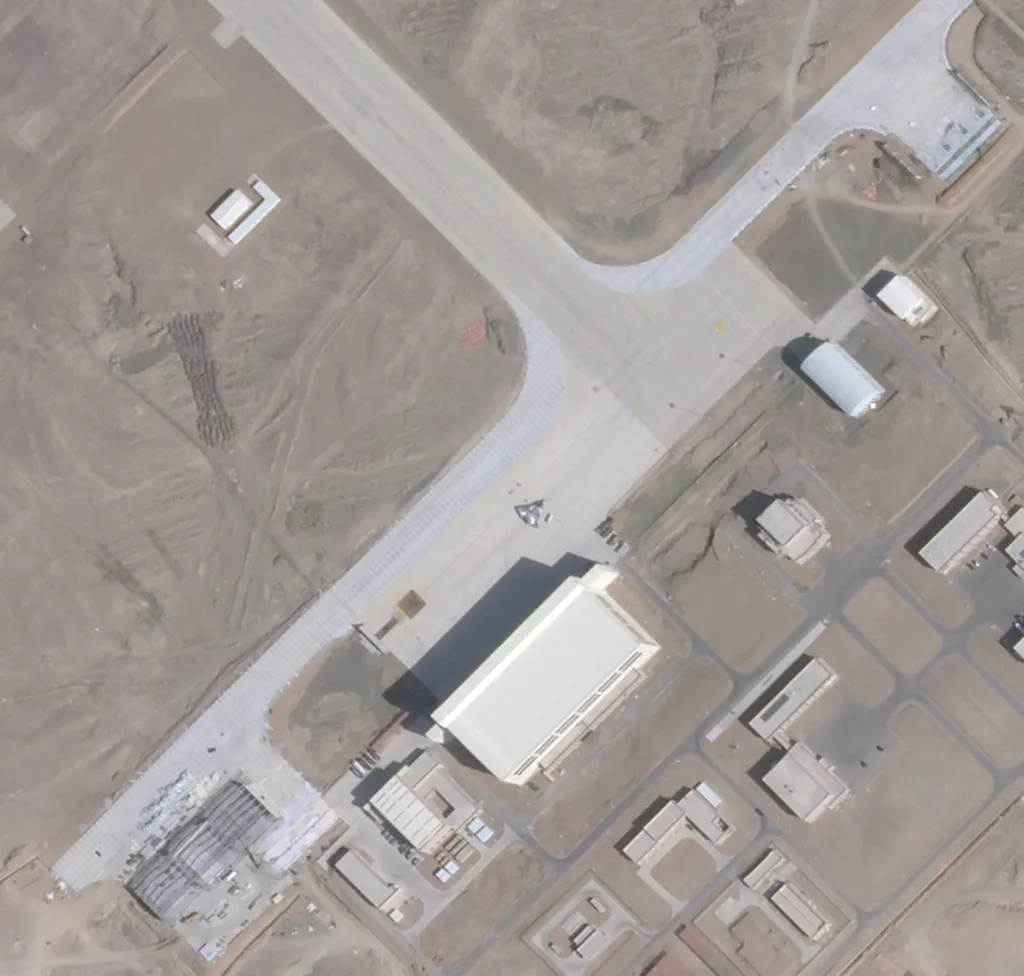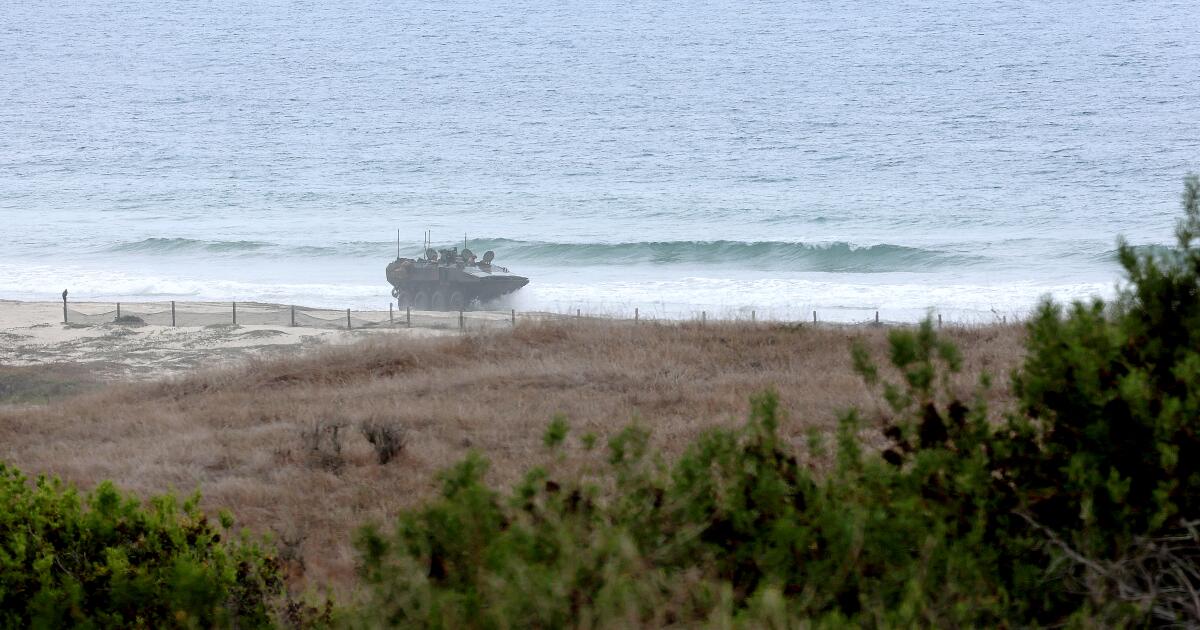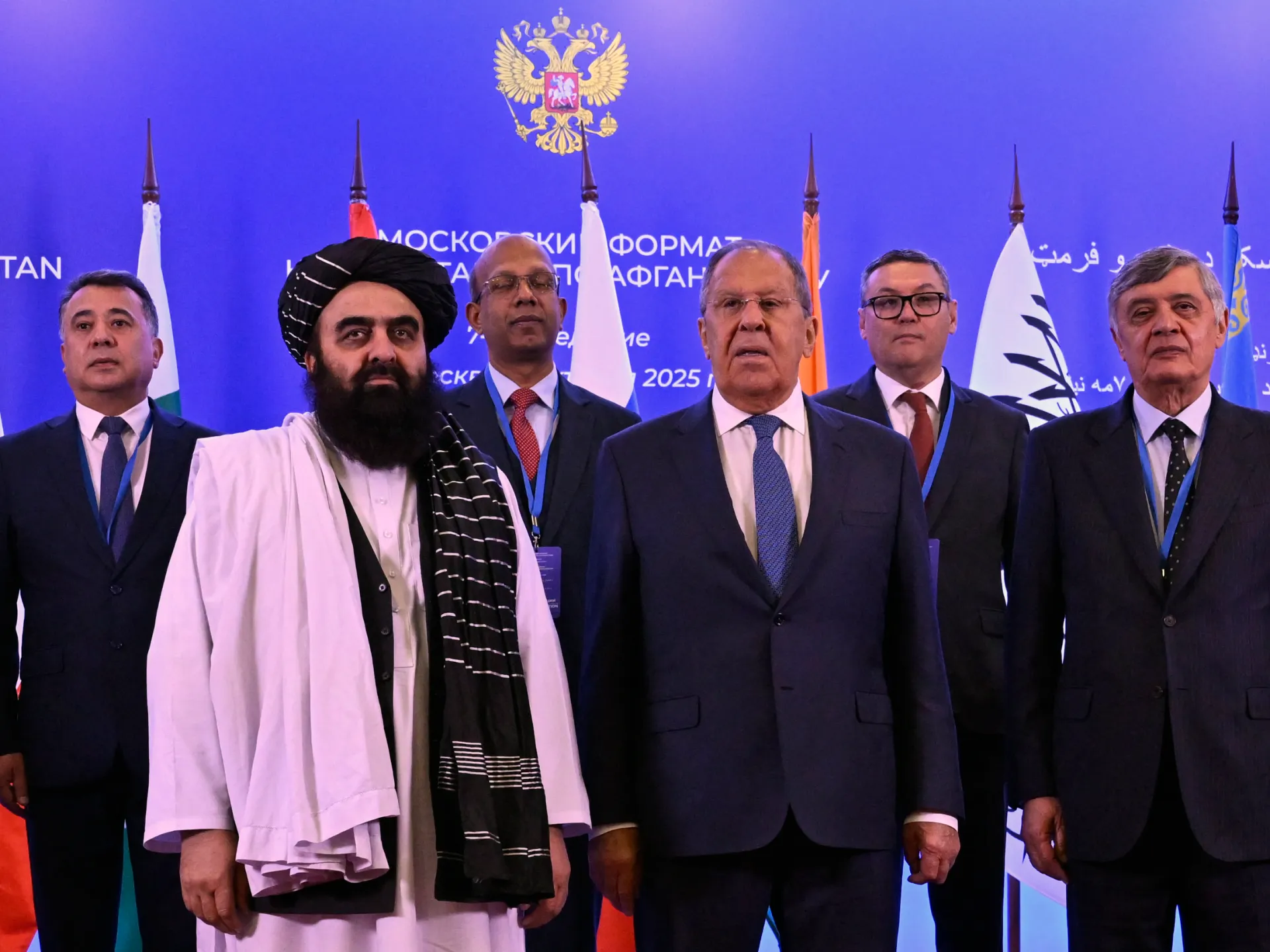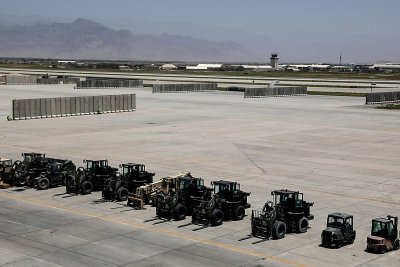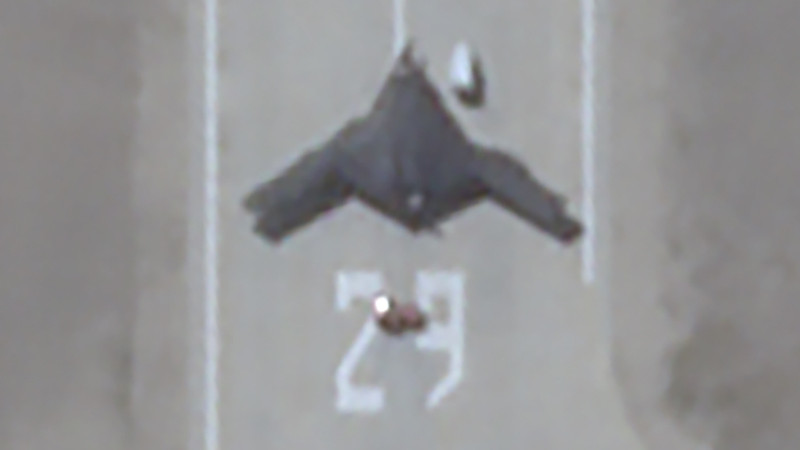China’s New Tailless Stealth Fighters Both Appear At Secretive Test Base
We now have the first known commercial satellite imagery of the two Chinese sixth-generation stealth fighter designs that emerged nearly a year ago. The aircraft, which are commonly referred to now as the J-36 and the J-XDS, have been spotted in separate images not at their home airfields where they were built, but at a secretive airbase with a massive runway situated near the Lop Nur nuclear test site in northwestern China.
The J-36, readily identifiable by its large modified delta planform and ‘splinter’ camouflage paint scheme, is seen outside the main hangar at the facility’s central apron in an archived satellite image taken on August 27, which The War Zone obtained from Planet Labs. The J-XDS is seen in another Planet Labs image of the airfield taken on September 13. Previously, the J-36 and J-XDS have only been definitively spotted flying in and out of the main airfields associated with their respective manufacturers, Chengdu and Shenyang. Readers can find TWZ‘s very in-depth initial analysis on the J-36 and the J-XDS here.
This particular base near Lop Nur, which has been linked to work on reusable space planes, is also now undergoing a major expansion. It notably already has a runway over 16,400 feet long, or more than 3 miles in total length, making it one of the longest anywhere in the world.



The August 27 satellite image offers new details about the J-36’s size, showing it to have a wingspan of approximately 65 feet and an overall length of some 62 feet. It has already been clear that the three-engined J-36, two distinctly different prototypes of which have now emerged, is a very large tactical aircraft. For comparison, members of the extended Soviet-designed Flanker fighter family, like China’s J-16s, have wingspans of around 48 feet. Flankers are already well known for their large size relative to other fourth-generation fighter designs. As another point of comparison, the variable geometry F-111’s fully extended wingspan was 63 feet.



The September 13 image shows the J-XDS to have a wingspan of around 50 feet and be slightly shorter than the J-36. It’s worth noting that the shadow and image resolution make this estimate more challenging, and readers are advised to take it as such. It has been previously established that the twin-engined J-XDS, also sometimes referred to as the J-50, with its “lambda” wing planform, is smaller and slimmer than the J-36. That being said, it is still firmly in the heavy fighter class.


As mentioned, the remote base near Lop Nur is in the process of being expanded in a major way, overall. The work only started in earnest in the past six months or so, and significant progress has already been made. This includes the enlargement of the main apron, with a single new hangar also having been built at the northeastern end. Three smaller hangars, all joined together and that look to be typical of ones for fighter-sized aircraft, have been constructed at the opposite end, as well.
In addition, a host of other new buildings are seen under construction to the immediate southeast, pointing to plans to expand the scope and scale of work being done at the facility. The series of satellite images below gives a sense of the sheer magnitude of work that has been done just since May of this year.

There had already been a pronounced expansion of the infrastructure at the base in the early 2020s, including the construction of the large main hangar and associated apron. As noted, at that time, the facility seemed largely tied to Chinese military space development efforts. TWZ‘s first report on the airfield came in 2020 after a reusable space plane appeared to have landed there. Last year, we reported on it again after satellite imagery emerged showing a still-mysterious object sitting at one end of the runway.


It seems clear now that the facility has taken on a larger and still growing role in China’s broader advanced aerospace development ecosystem. Comparisons have already been drawn in the past to the U.S. military’s top-secret flight test center at Groom Lake in Nevada, better known as Area 51.
The airfield near Lop Nur is even more remote than China’s existing sprawling test airbase near Malan in Xinjiang province, which also seems to be almost exclusively focused, in terms of aerospace development tasks, on uncrewed aircraft. It also appears to host aircraft detachments for more general training and testing.
The construction of new hangars and other infrastructure at the base in question can only further help with the concealment of assets and other activity there from prying eyes, including in space. That being said, the site is regularly imaged, including by commercial satellites, which clearly did not deter the Chinese from parking the J-36 and J-XDS outside in broad daylight.
Regardless, the appearance of the J-36 and J-XDS at the remote base around the same time is also telling of the facility’s new mission to support the development of advanced air combat technologies. It is further indicative of the state of China’s rapidly evolving sixth-generation fighter programs that they have operated out of this place, possibly alongside each other.
All of this reflects a broader ramping up in China of the development and testing of next-generation tactical air combat platforms, as well as key supporting aircraft. This includes a host of advanced drones intended to perform a variety of missions. Some of these designs are very large, while others are smaller and more in the vein of ‘loyal wingman,’ or what is now often called a Collaborative Combat Aircraft (CCA). For example, the satellite image below, from Planet Labs’ archive of shots taken of Malan, shows what is likely a fighter-sized CCA-type uncrewed aircraft.

These Chinese military aviation trends extend into the naval domain, as well. This past weekend, images emerged online that offer the first look at a navalized version of the GJ-11 Sharp Sword stealthy flying-wing uncrewed combat air vehicle (UCAV), intended for operations from aircraft carriers and big deck amphibious assault ships, with its arrestor hook deployed. This drone is sometimes also referred to as the GJ-21.
Even with major construction still underway, the secretive and remote base near Lop Nur is already becoming busier, and has now given us the first commercial satellite imagery showing the J-36 and J-XDS. The facility expansion is likely to see it support future advanced tactical aircraft developments, playing a bigger part in these endeavors going forward.
Contact the author: [email protected]
